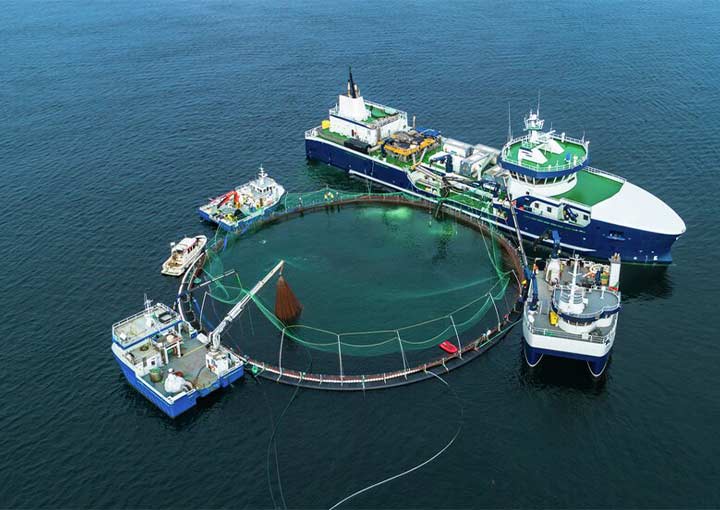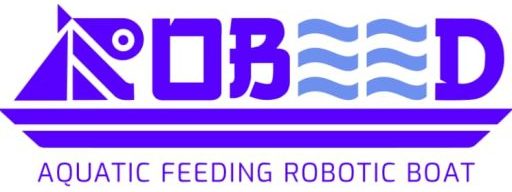
Integration of Fish Feeding Boats with Other Aquaculture Technologies and Systems
Introduction:
The aquaculture industry has experienced remarkable technological advancements in recent years, revolutionizing the way fish are farmed and leading to improved efficiency and productivity. Among these innovative developments, the integration of fish feeding boats with other aquaculture technologies and systems has emerged as a game-changer. This integration enables seamless coordination and optimization of various processes, ultimately enhancing fish health, growth, and overall farm profitability. In this blog post, we will delve into the extensive benefits and explore the vast range of possibilities that arise from the integration of fish feeding boats with other aquaculture technologies and systems.
Traditionally, fish feeding boats were primarily used for the distribution of feed to fish populations in aquaculture farms. However, with the advent of sophisticated technologies, these boats can now be equipped with a wide array of additional features and capabilities, transforming them into multifunctional tools. By integrating fish feeding boats with other aquaculture technologies such as automated monitoring and control systems, remote sensing and imaging technologies, feeding optimization algorithms, waste management systems, and fish health monitoring systems, fish farmers can unlock a multitude of benefits, maximizing efficiency and productivity.
Automated monitoring and control systems:
Automated monitoring and control systems play a crucial role in the integration of fish feeding boats with other aquaculture technologies. By incorporating these systems into fish feeding boats, fish farmers can benefit from real-time data collection and analysis, leading to improved decision-making and enhanced farm management.
These automated systems continuously monitor vital parameters such as water quality, dissolved oxygen levels, temperature, and feeding patterns. The data collected by sensors and instruments installed on the fish feeding boats is transmitted in real-time to a central control system. This data can then be analyzed to gain insights into the current condition of the aquaculture environment.
With this information at their fingertips, fish farmers can make informed decisions regarding feed distribution. By adjusting the feeding schedule and quantity based on the specific needs of the fish populations, farmers can optimize feed utilization and minimize waste. This not only reduces costs but also promotes efficient growth and development of the fish.
Moreover, automated monitoring and control systems allow for timely adjustments to environmental conditions. For example, if the water quality or temperature deviates from the optimal range, the system can trigger alerts or automatically activate measures to rectify the issue. This proactive approach ensures that the fish are provided with the best possible conditions for growth and health.
Remote sensing and imaging technologies:
Integration of fish feeding boats with remote sensing and imaging technologies enhances the ability to monitor fish behavior, health, and biomass. underwater cameras and sensors can be installed on the boats to capture data on fish activity, feeding response, and growth rates. This information helps fish farmers assess the effectiveness of the feeding strategy and make necessary adjustments. additionally, remote sensing technologies can provide valuable insights into water quality, detecting potential issues such as algal blooms or pollution. The integration of these technologies enables proactive management and improved decision-making processes.
By utilizing remote sensing and imaging technologies, fish farmers can gain a comprehensive understanding of the aquatic environment in which their fish are raised. Underwater cameras can capture high-resolution images and videos, allowing farmers to observe fish behavior and identify any abnormal patterns that may indicate stress or health issues. This early detection enables prompt intervention, reducing the risk of disease outbreaks and minimizing losses.
Furthermore, remote sensing technologies can provide valuable information about water quality parameters such as temperature, salinity, dissolved oxygen levels, and turbidity. By monitoring these parameters in real-time, fish farmers can identify any deviations from the desired range and take immediate corrective actions. For example, if the dissolved oxygen levels are low, the feeding system can be adjusted to reduce feed distribution and prevent oxygen depletion. Similarly, if there is an increase in water turbidity, indicating a potential algal bloom, the feeding schedule can be modified to avoid exacerbating the bloom.
Integration of remote sensing and imaging technologies with fish feeding boats also offers benefits in terms of biomass estimation. By using advanced imaging techniques, farmers can accurately estimate the size and weight of the fish population, enabling precise feed allocation and optimizing growth rates. This information is crucial for managing feed resources efficiently and ensuring uniform growth across the farm.
Feeding optimization algorithms:
Feeding optimization algorithms consider the nutritional requirements of different fish species and their growth stages. By precisely calculating the amount of feed required, farmers can avoid overfeeding, which can lead to water pollution and health issues. Moreover, these algorithms take into account environmental conditions such as water temperature and oxygen levels, adjusting the feeding schedule accordingly. For example, during periods of low water temperature, fish metabolism slows down, and they require less feed. By optimizing the feeding schedule based on such factors, farmers can minimize feed wastage and improve feed conversion rates.
In addition, feeding optimization algorithms contribute to uniform growth across the farm. By considering the size and weight of individual fish populations, the algorithms allocate the appropriate amount of feed to ensure balanced growth. This reduces the occurrence of smaller or stunted fish, maximizing overall profitability for fish farmers.
The integration of feeding optimization algorithms with fish feeding boats not only enhances feed efficiency but also reduces the labor and time required for manual feeding. Automation allows for precise and consistent feeding, freeing up labor resources for other important tasks in the aquaculture operation.
Waste management systems:
Integration of fish feeding boats with waste management systems can significantly reduce the environmental impact of aquaculture operations. Fish feeding boats can be equipped with waste collection systems that capture uneaten feed and fish waste, preventing it from polluting the water. This waste can then be processed and used for other purposes, such as fertilizer production or energy generation. by effectively managing waste, fish farmers can maintain a sustainable and eco-friendly operation.
Waste management systems on fish feeding boats can include mechanisms such as screens or filters that collect solid waste, preventing it from being discharged into the surrounding water. These systems can also include settling tanks or sedimentation chambers that allow suspended particles to settle, further improving water quality.
Once collected, the waste can be processed through various methods such as composting, anaerobic digestion, or vermiculture. composting can convert organic waste into nutrient-rich fertilizer, which can be used in agriculture or horticulture. anaerobic digestion can produce biogas, a renewable energy source, by breaking down organic waste in the absence of oxygen. Vermiculture involves using worms to decompose the waste and produce nutrient-rich vermicompost.
By integrating waste management systems with fish feeding boats, farmers can minimize the release of pollutants into the environment, reduce the risk of eutrophication, and improve overall water quality. This not only benefits the aquatic ecosystem but also promotes the sustainability and reputation of the aquaculture operation.
In conclusion, the integration of waste management systems with fish feeding boats plays a crucial role in reducing the environmental impact of aquaculture operations. by capturing and processing waste, fish farmers can minimize pollution, recycle valuable resources, and maintain a sustainable and eco-friendly operation. this integration aligns with the principles of responsible aquaculture and contributes to the long-term viability of the industry.
Fish health monitoring and disease prevention:
Fish health monitoring systems can provide valuable data on water quality parameters, such as oxygen levels and nutrient concentrations, which are crucial for maintaining optimal fish health. By continuously monitoring these parameters, fish farmers can quickly identify any deviations and take corrective actions to prevent stress and disease.
The integration of fish health monitoring systems with fish feeding boats also allows for remote monitoring and control. Farmers can access real-time data and make adjustments to feeding schedules, water quality parameters, and other environmental factors from a central control system. This enables proactive management and swift response to any potential health issues, even from a distance.
Furthermore, the integration of fish health monitoring systems promotes biosecurity in aquaculture operations. By closely monitoring fish health and promptly identifying any signs of disease, farmers can implement strict quarantine measures and prevent the spread of pathogens among fish populations. This helps protect the overall health and integrity of the farm, reducing the risk of severe disease outbreaks and economic losses.
conclusion:
The integration of fish feeding boats with other aquaculture technologies and systems opens up new possibilities for improved efficiency, productivity, and sustainability in the industry. By combining automated monitoring and control systems, remote sensing technologies, feeding optimization algorithms, waste management systems, and fish health monitoring, fish farmers can create a harmonized and optimized aquaculture operation.
This integration enables precise feeding practices, proactive disease prevention, and efficient resource management. As technology continues to advance, the integration of fish feeding boats with other aquaculture technologies will play a vital role in the future of sustainable aquaculture.

